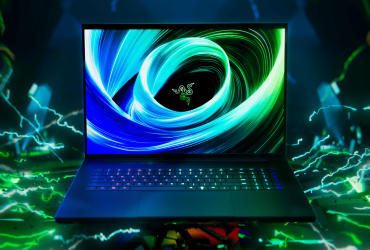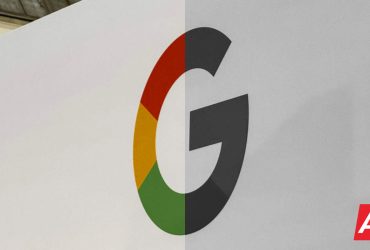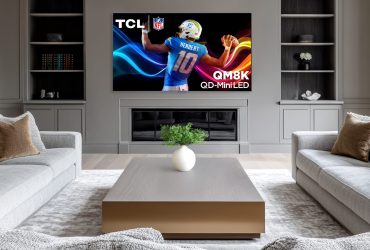Phone Comparisons: Samsung Galaxy S25 Edge Vs Google Pixel 9 Pro Specs
Contents
This time around, we’re comparing two high-end smartphones. The first one is Samsung’s new ultra-thin offering, the Galaxy S25 Edge. On the other side stands one of Google’s most powerful smartphones, the company’s compact flagship. In other words, we’ll be comparing the Samsung Galaxy S25 Edge vs Google Pixel 9 Pro specs. We will list their specs first, and will take things from there.
These two smartphones are not exactly similar. They are visibly different the moment you lay your eyes on them, while the differences continue in the spec department too. In this article, we’ll talk about their designs, displays, performance, battery life, cameras, and audio output. So, let’s get started, shall we?

Samsung Galaxy S25 Edge
![]()
Google Pixel 9 Pro
| Samsung Galaxy S25 Edge | Google Pixel 9 Pro | |
|---|---|---|
| Dimensions | 158.2 x 75.6 x 5.8 mm | 152.8 x 72 x 8.5 mm |
| Weight | 163 grams | 199 grams |
| Display | 6.7-inch LTPO AMOLED 2X | 6.3-inch LTPO OLED |
| Refresh rate | 1-120Hz (adaptive) | 1-120Hz (adaptive) |
| Resolution | 3120 x 1440 | 2856 x 1280 |
| Chipset | Qualcomm Snapdragon 8 Elite for Galaxy | Google Tensor G4 |
| RAM | 12GB (LPDDR5X) | 16GB (LPDDR5X) |
| Storage | 256GB/512GB (UFS 4.0) | 128GB/256GB/512GB/1TB (UFS 3.1) |
| Main camera | 200MP (wide, f/1.7 aperture, 1/1.56-inch sensor size, OIS, PDAF) | 50MP (f/1.7 aperture, 1/1.31-inch sensor size, 1.2um pixel size, dual pixel PDAF, OIS) |
| Ultra-wide camera | 12MP (f/2.2 aperture, PDAF) | 48MP (f/1.7 aperture, 1/2.55-inch sensor size, 123-degree FoV, dual pixel PDAF) |
| Telephoto camera | N/A | N/A |
| Periscope telephoto camera | N/A | 48MP (f/2.8 aperture, 1/2.55-inch sensor size, dual pixel PDAF, OIS, 5x optical zoom) |
| Selfie camera | 12MP (wide, f/2.2 aperture) | 42MP (f/2.2 aperture, PDAF) |
| Battery size | 3,900mAh | 4,700mAh |
| Charging | 25W wired, Qi wireless (charger not included) | 27W wired, 21W wireless (Pixel Stand), 12W wireless (Qi), 5W reverse wired (charger not included) |
| Colors | Titanium Icyblue, Titanium Silver, Titanium Jetblack | Porcelain, Rose Quartz, Hazel, Obsidian |
Samsung Galaxy S25 Edge vs Google Pixel 9 Pro: Design
These two phones are different design-wise, but there are some similarities. For example, both smartphones have flat front and back sides, while their frames are also flat all around. They both also have a centered display camera hole up top, even though the one on the Galaxy S25 Edge is notably smaller. The bezels around both displays are also uniform. The ones on the Galaxy S25 Edge are thinner, though, visibly.
The Galaxy S25 Edge has a titanium frame, while the Pixel 9 Pro includes an aluminum frame. You’ll find all the physical buttons on the right-hand side of both phones. The layout is a bit different, however. The power/lock key sits below the volume up and down buttons on the Galaxy S25 Edge. It’s the other way around on the Pixel 9 Pro. There are no other buttons on either phone.
If we flip them around, you’ll see notably different camera islands. Both are pill-shaped, but entirely different. The Galaxy S25 Edge has two vertically-aligned cameras in the top-left corner. The Pixel 9 Pro has a horizontal camera bar up top, which contains three cameras. Both camera setups do protrude on the back. These smartphones are IP68 certified for water and dust resistance. Both of them are also quite slippery.
The Galaxy S25 Edge is taller, wider, and notably thinner. This phone’s main selling point is its thinner, so… that is to be expected. Do note that the Pixel 9 Pro is also thin, however, so… there you go. The Pixel 9 Pro is over 30 grams heavier at 199 grams. The Galaxy S25 Edge weighs 163 grams.
Samsung Galaxy S25 Edge vs Google Pixel 9 Pro: Display
The Samsung Galaxy S25 Edge features a 6.7-inch Dynamic AMOLED 2X display. It is a flat display with a 3120 x 1440 resolution. This panel has an adaptive refresh rate (1-120Hz), and it supports HDR10+ content. The screen-to-body ratio is at around 92%, while the display aspect ratio is 19.5:9. This display is protected by the Gorilla Glass Ceramic 2 by Corning, in case you were wondering.

The Google Pixel 9 Pro, on the flip side, has a 6.3-inch LTPO OLED panel. That display is also flat, and it has a 2856 x 1280 resolution. HDR10+ content is supported here, while an adaptive refresh rate (1-120Hz) is on board too. The peak brightness here is 3,000 nits. The screen-to-body ratio is at around 87%, while the display aspect ratio is 20:9. Corning’s Gorilla Glass Victus 2 protects this panel.
Both of these displays are very good, actually. They’re both vivid and have great viewing angles. The touch response is good, while the blacks are as deep as you’d expect them to be. The displays are also very sharp, and they do get bright enough when you need them to. What they don’t offer is a high-frequency PWM dimming like many of the competitors from China. So if that’s important to you, keep note of that, as some people are kind of sensitive to it.
Samsung Galaxy S25 Edge vs Google Pixel 9 Pro: Performance
The Samsung Galaxy S25 Edge is fueled by the Snapdragon 8 Elite for Galaxy, a 3nm processor. That is an overclocked version of Qualcomm’s most powerful chip. It comes with 12GB of LPDDR5X RAM and UFS 4.0 flash storage. The Google Pixel 9 Pro, on the flip side, is fueled by the Google Tensor G4 processor. That is a 4nm chip, and the most powerful one Google has to offer. It comes with 16GB of LPDDR5X RAM and UFS 3.1 flash storage.
Samsung’s handset does come with a more powerful chip. That’s obvious. The thin is, the Tensor G4 is really well-adapted to Pixel phones, and it does offer really good performance. In direct comparison, the Galaxy S25 Edge can feel a moment faster when opening more demanding apps, but in general use, the two phones seem equally snappy, actually. They can easily jump between apps, consume multimedia, be messaging machines, and anything else you can think of.
We didn’t test out the Galaxy S25 Edge’s gaming prowess just yet, but from what we’ve seen, it can handle games just fine, even though it does produce more heat than it should, mostly due to its extreme thinness. The Pixel 9 Pro is not exactly a gaming machine, but it can handle games just fine. It may not do as well with the most demanding titles, but it can run anything, really.
Samsung Galaxy S25 Edge vs Google Pixel 9 Pro: Battery
There is a 3,900mAh battery included inside the Galaxy S25 Edge. The Google Pixel 9 Pro, on the other hand, includes a 4,700mAh battery. So, despite the fact the Galaxy S25 Edge is notably larger, it has a considerably smaller battery. Why? Well, that is Samsung’s attempt at an ultra-thin phone, but Samsung didn’t use a silicon-carbon battery, which would allow the company to place more capacity in the same body. The result is a rather tiny battery for this phone.
The battery life on the Galaxy S25 Edge is not great. You’ll be able to read more about that once our review drops, but the phone is not for demanding users. For casual users, it may last through the day, but if you push it a bit harder, it’s a no-go. The Pixel 9 Pro offers notably better battery life in comparison, at least based on what we’ve seen thus far. The Pixel 9 Pro managed to last through a full day’s worth of use even when pushed a bit harder.
Samsung handset supports 25W wired charging, along with 15W wireless charging (Qi2 Ready). The Pixel 9 Pro, on the flip side, supports 27W wired, 21W wireless (with Pixel Stand), 12W Qi wireless, and 5W reverse wireless charging. Neither of these two smartphones comes with a charger in the retail box. You’ll need to get one on the side, if you don’t already own it.
Samsung Galaxy S25 Edge vs Google Pixel 9 Pro: Cameras
There are two cameras included on the back of the Galaxy S25 Edge. The main one is a 200-megapixel unit (1/1.3-inch sensor size), while the second one is a 12-megapixel ultrawide camera (1/2.55-inch sensor size). The Pixel 9 Pro has three cameras on the back. A 50-megapixel main camera (1/1.31-inch sensor size) is backed by a 48-megapixel ultrawide camera (1/2.55-inch sensor size, 123-degree FoV) and a 48-megapixel periscope telephoto unit (1/2.55-inch sensor size, 5x optical zoom).

While both phones seem to be doing a good job in the camera department, the results are different. The Galaxy S25 Edge’s main camera seems to be on par with the Galaxy S25 Ultra’s main shooter, even better in some ways, despite the same hardware. The main cameras on both phones prefer more vivid images, though the Pixel 9 Pro has a more contrasty look in comparison. Neither phone provides images that look close to real-life, and that’s probably what most people prefer. They both do a great job in low light.
The ultrawide camera on the Pixel 9 Pro does a better job across the board. Considering that the Galaxy S25 Edge does not have a telephoto or a periscope telephoto camera at all, that’s where the Pixel 9 Pro wins by default. It has a very capable periscope telephoto shooter, actually.
Audio
Both of these phones feature stereo speakers. The ones on the Pixel 9 Pro are louder, though, noticeably louder. Both sets of speakers do a good job, though, in terms of output quality, The Galaxy S25 Edge’s are loud enough, they’re just not as loud as the ones on the Pixel 9 Pro.
There is no audio jack on either of the two phones. You can connect your wired headphones via the Type-C port on both phones, though. Alternatively, the Galaxy S25 Edge supports Bluetooth 5.4, while the Pixel 9 Pro comes with Bluetooth 5.3 support.
What’s your reaction?
Love0
Sad0
Happy0
Sleepy0
Angry0
Dead0
Wink0









Leave a Reply
View Comments